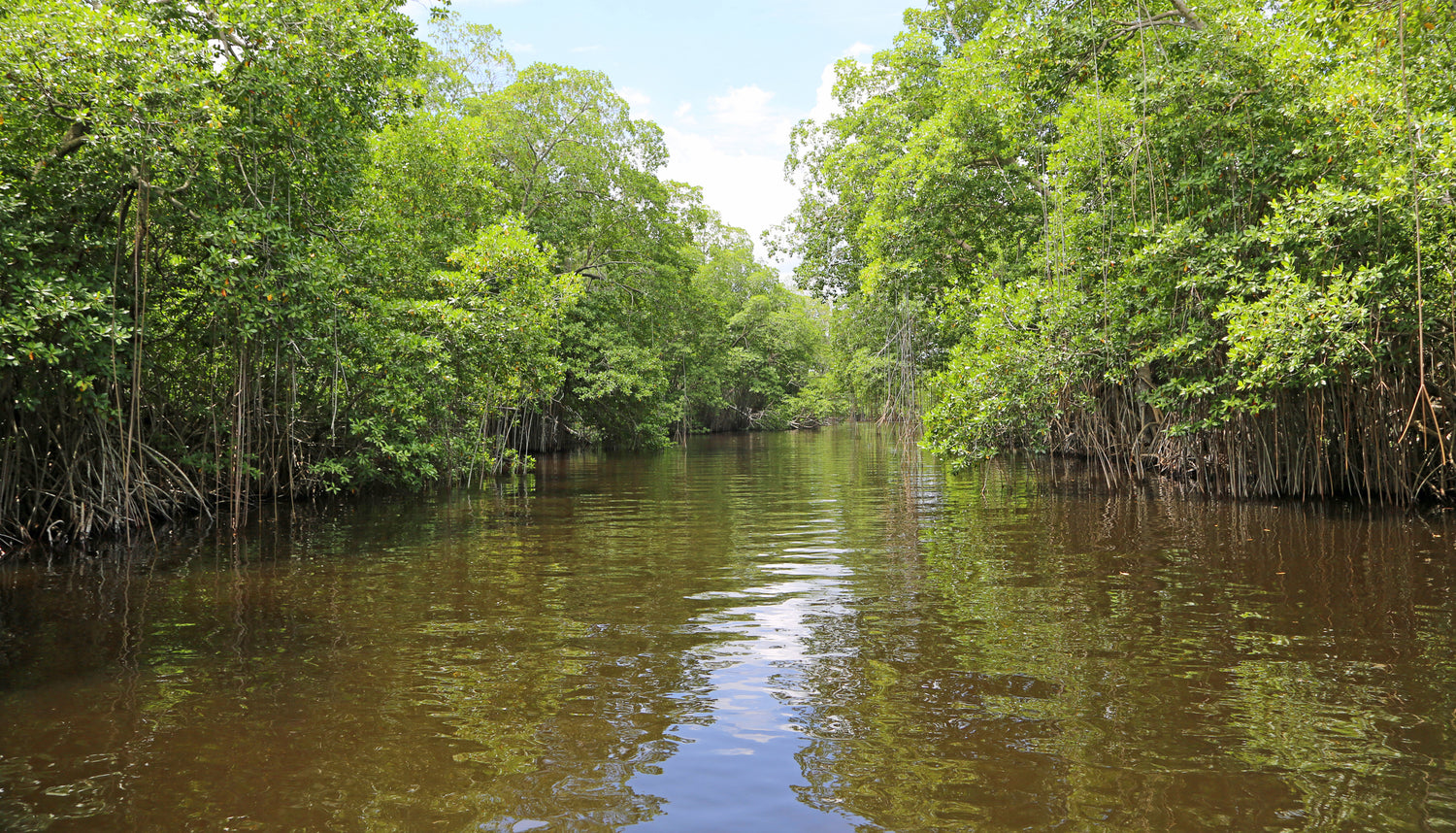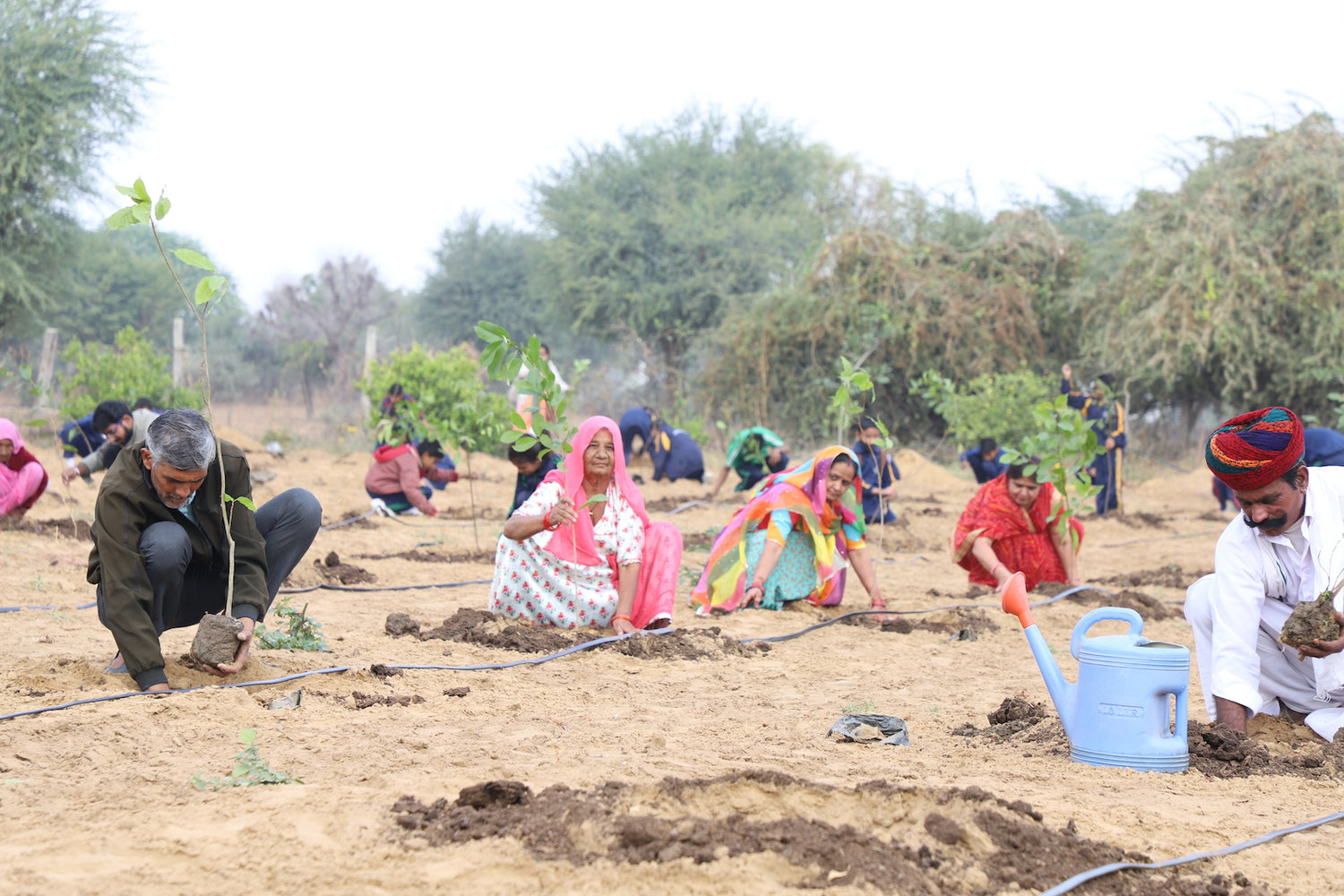Mangroves in Lakshadweep Islands: India’s Unique Coastal Oasis
The Lakshadweep Islands, a serene archipelago in the Arabian Sea, are renowned for their pristine beaches, coral reefs, and clear blue waters. Among t Read more
Connect with us
-
👥 Corporates
If you are looking for:
- 🌲 Tree Plantation Events
- 📊 CSR Projects
📧 corporate@growbilliontrees.com
📞 +91 9699723523
💬 +91 9325931304 WhatsApp (Only)
🕒 Mon - Sat | 10am - 7pm IST
-
🧩 Tree Plantation NGOs
If you are looking for:
- 💰 Financial Assistance
- 🤝 Operational Support
📧 support@growbilliontrees.com
📞 +91 9699723523
💬 +91 9325931304 WhatsApp (Only)
🕒 Mon - Sat | 10am - 7pm IST
-
🌼 Individuals
If you are looking for:
- 👥 Group Tree Plantation Drive
- 🌳 Bulk Tree Plantation
📞 +91 9699723523
💬 +91 9325931304 WhatsApp (Only)
🕒 Mon - Sat | 10am - 7pm IST
Trending
Trees for Corporates
Mangroves in Lakshadweep Islands: India’s Unique Coastal Oasis
The Lakshadweep Islands, a serene archipelago in the Arabian Sea, are renowned for their pristine beaches, coral reefs, and clear blue waters.
Among these natural wonders, the mangroves play a critical, often overlooked, role. These mangroves form a unique coastal oasis, contributing to biodiversity, climate resilience, and the livelihoods of local communities.
Historical and Cultural Significance
Mangroves in the Lakshadweep Islands have supported coastal communities for centuries.
The traditional practices of fishing, shell collection, and cultivation in these islands often relied on the natural buffer provided by mangroves. Historical accounts suggest that mangroves also served as natural breakwaters, protecting the islands from strong winds and tidal surges.
Despite their limited distribution compared to mainland mangroves, their ecological value in the fragile atoll ecosystems of Lakshadweep is immense.
Ecological Importance
-
Biodiversity Hotspot
The mangroves in Lakshadweep are home to species like fiddler crabs, mudskippers, and a variety of fish and mollusks. These ecosystems support migratory birds and provide critical habitats for marine life. -
Natural Shields
Mangroves protect the islands’ coasts from erosion, tidal waves, and cyclones. During extreme weather events, such as Cyclone Ockhi (2017), mangroves acted as natural buffers, mitigating the damage. -
Carbon Sequestration
Studies show that mangroves store more carbon than most terrestrial forests. In Lakshadweep, their carbon sequestration capabilities contribute to the fight against climate change. -
Marine Nurseries
These mangroves serve as nurseries for commercially significant fish species, sustaining the local fishing economy. The intricate root systems provide shelter and breeding grounds for marine life.
Fun Facts About Lakshadweep’s Mangroves
- Lakshadweep’s mangroves are smaller in scale but have one of the highest ecological impacts per unit area due to the islands’ fragile ecosystem.
- The atoll structure of Lakshadweep makes these mangroves uniquely adapted to saline environments.
- Fiddler crabs in Lakshadweep’s mangroves are not just adorable—they are also ecosystem engineers, aerating the soil and improving nutrient cycles.
Environmental Challenges
-
Rising Sea Levels
Climate change is a significant threat to Lakshadweep. Rising sea levels and increased salinity endanger the mangroves, which are already limited in extent. -
Pollution
Marine pollution, including plastic waste and oil spills, harms the delicate balance of these ecosystems. -
Urbanization and Tourism
Unregulated tourism and infrastructure development have led to habitat degradation in some areas.
Grow Billion Trees: Conserving Lakshadweep’s Mangroves
Grow Billion Trees plays an essential role in restoring and protecting the mangroves of Lakshadweep. Through community involvement, advanced technology, and sustainable practices, the organization ensures these fragile ecosystems thrive.
Collaborations:
- Partnering with Lakshadweep’s Forest Department and local NGOs for restoration projects.
- Working with research institutions to study mangrove biodiversity and resilience.
Execution Strategies:
- Establishing nurseries for salt-tolerant mangrove species like Rhizophora mucronata and Avicennia marina.
- Conducting plantation drives in degraded areas to expand mangrove coverage.
- Using drone technology and satellite mapping to monitor growth and ecosystem health.
Awareness Campaigns:
- Conducting workshops for schools and communities to emphasize the ecological and economic importance of mangroves.
- Promoting eco-tourism initiatives like guided mangrove tours to raise awareness and generate funds for conservation.
- Running social media campaigns to highlight the role of mangroves in climate resilience and biodiversity protection.
Key Achievements by Grow Billion Trees
- Community-Based Nurseries: In collaboration with local women’s groups, Grow Billion Trees has established mangrove nurseries that provide economic benefits while expanding mangrove coverage.
- Marine Life Restoration: Restoration projects have increased the habitats available for fish and crustaceans, boosting the local fishing economy.
- Eco-Tourism Development: Initiatives like mangrove kayaking tours provide visitors with an immersive experience while promoting conservation awareness.
Future Prospects
By 2030, Lakshadweep’s mangroves could set an example for island ecosystems worldwide.
Strategic conservation and restoration efforts can enhance biodiversity, bolster climate resilience, and create sustainable livelihoods for island communities.
Increasing mangrove coverage in Lakshadweep would amplify their role as natural shields against rising seas and protect the islands’ delicate marine and coastal environments.
Conclusion
The mangroves of Lakshadweep Islands are more than just green fringes—they are lifelines for biodiversity, local livelihoods, and climate resilience.
Protecting these ecosystems is essential for preserving the islands’ natural beauty and ecological balance.
Grow Billion Trees is leading the charge, combining innovation, community participation, and sustainable practices to restore and protect Lakshadweep’s unique coastal oasis.
Through collective action, these mangroves can continue to thrive as guardians of the islands for generations to come.
Mangroves in Minicoy Island
Nestled in the southernmost part of Lakshadweep, Minicoy’s mangroves are natural buffers that protect its shores and nurture vibrant marine life.
Mangroves and Coral Reefs
Lakshadweep’s mangroves work in tandem with coral reefs, creating a unique coastal ecosystem that supports biodiversity and shields against erosion.
Biodiversity in Lakshadweep Mangroves
From fiddler crabs to migratory birds, these mangroves are bustling with life, offering a front-row seat to nature’s finest spectacles.
Mangroves as Cyclone Shields
Acting as natural defense systems, these mangroves reduce the impact of cyclones, proving that the best fortresses are made by nature.
Mangroves and Carbon Sequestration
Lakshadweep’s mangroves are climate warriors, storing carbon efficiently while fighting rising sea levels and climate change.
Threats to Lakshadweep’s Mangroves
Pollution, habitat degradation, and rising salinity are chipping away at these ecosystems, demanding urgent conservation efforts.
Grow Billion Trees in Lakshadweep
This initiative restores mangroves, partners with locals, and employs innovative techniques to ensure these ecosystems thrive.
Mangroves and Fisheries
These mangroves act as nurseries for fish and shrimp, directly sustaining Lakshadweep’s local fishing communities and marine economy.
Mangroves and Tourism in Lakshadweep
Offering serene kayaking tours and eco-friendly exploration, these mangroves are becoming a favorite for adventure-seekers and conservation enthusiasts alike.
Community Role in Mangrove Conservation
Lakshadweep’s communities are the backbone of mangrove conservation, working with Grow Billion Trees to balance livelihoods and sustainability.
Mangroves and Water Quality
Acting as nature’s filters, these mangroves trap sediments and improve water quality, ensuring healthier ecosystems for marine and human life.
Mangroves and Climate Resilience
Adapted to rising seas and salinity changes, Lakshadweep’s mangroves are nature’s frontline soldiers against the challenges of climate change.
You may like
Corporate Plantations
FAQ
What are the mangroves in Lakshadweep Islands?
These mangroves are coastal guardians, protecting the islands from erosion, supporting marine life, and storing carbon. Grow Billion Trees restores and protects these vital ecosystems for long-term sustainability.
Why are Lakshadweep’s mangroves important?
They shield coastlines, sustain fisheries, and combat climate change by storing carbon. Grow Billion Trees ensures these critical ecosystems thrive through restoration and awareness initiatives.
How do mangroves protect against cyclones?
Mangroves absorb storm surges and reduce the impact of cyclones, proving their role as nature’s best defense. Grow Billion Trees enhances this protection with focused conservation efforts.
What wildlife thrives in Lakshadweep’s mangroves?
From fiddler crabs to migratory birds, these mangroves are biodiversity hotspots. Grow Billion Trees ensures their habitats remain vibrant and biodiverse.
How do mangroves support Lakshadweep’s fisheries?
Acting as nurseries for fish and shrimp, mangroves directly support the islands’ fishing communities. Grow Billion Trees works to restore these ecosystems for economic and ecological balance.
What threats do Lakshadweep’s mangroves face?
Pollution, rising sea levels, and unregulated tourism threaten these ecosystems. Grow Billion Trees addresses these challenges with restoration projects and community engagement.
What is Grow Billion Trees doing for Lakshadweep’s mangroves?
We plant mangroves, engage local communities, and use technology to monitor and restore these fragile ecosystems, ensuring long-term health.
How do mangroves combat climate change in Lakshadweep?
They store carbon efficiently and act as shields against rising seas, making them climate warriors. Grow Billion Trees scales up restoration to amplify these benefits.
Why are Minicoy’s mangroves significant?
Minicoy’s mangroves protect its shores and sustain marine biodiversity. Grow Billion Trees actively restores degraded areas to preserve these vital ecosystems.
How do mangroves benefit eco-tourism in Lakshadweep?
Kayaking and nature tours in these mangroves attract eco-tourists while raising awareness about conservation. Grow Billion Trees promotes sustainable tourism to protect these habitats.
What makes Lakshadweep’s mangroves unique?
Thriving in a coral-dominated ecosystem, these mangroves support biodiversity and protect fragile coasts. Grow Billion Trees ensures their uniqueness is preserved through restoration efforts.
Can communities help conserve Lakshadweep’s mangroves?
Absolutely! Local communities are essential for mangrove conservation. Grow Billion Trees empowers them with resources and training to lead sustainable restoration efforts.























